Mercedes V Class VS Toyota C-HR – Specs, Efficiency & Price Comparison
Which model is the better choice – the Mercedes V Class or the Toyota C-HR? We compare performance (237 HP vs 223 HP), boot capacity (1410 L vs 447 L), efficiency (7.10 L vs 0.80 L), and of course, the price (44900 £ vs 29100 £).
Find out now which car fits your needs better!
The Mercedes V Class (Bus) is powered by a Diesel or Petrol engine and comes with a Automatic transmission. In comparison, the Toyota C-HR (SUV) features a Full Hybrid or Plugin Hybrid engine and a Automatic gearbox.
When it comes to boot capacity, the Mercedes V Class offers 1410 L, while the Toyota C-HR provides 447 L – depending on what matters most to you. If you’re looking for more power, you’ll need to decide whether the 237 HP of the Mercedes V Class or the 223 HP of the Toyota C-HR suits your needs better.
There are also differences in efficiency: 7.10 L vs 0.80 L. In terms of price, the Mercedes V Class starts at 44900 £, while the Toyota C-HR is available from 29100 £.
Compare all the key specs now and find out which model fits your lifestyle best!
Mercedes V Class
The Mercedes-Benz V-Class exemplifies luxury and versatility in the world of multi-purpose vehicles. Its spacious interior is designed to accommodate both family adventures and executive travel with supreme comfort. With advanced technology and premium materials, the V-Class offers an unparalleled driving experience that seamlessly blends practicality with elegance.
details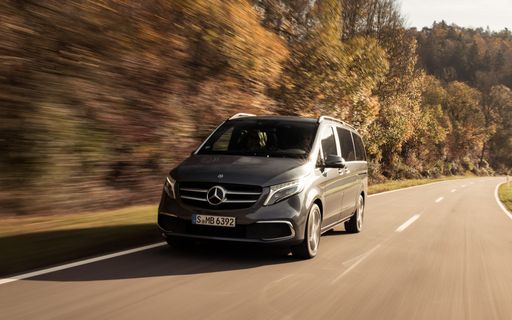 @ group-media.mercedes-benz.com
@ group-media.mercedes-benz.com
 @ group-media.mercedes-benz.com
@ group-media.mercedes-benz.com
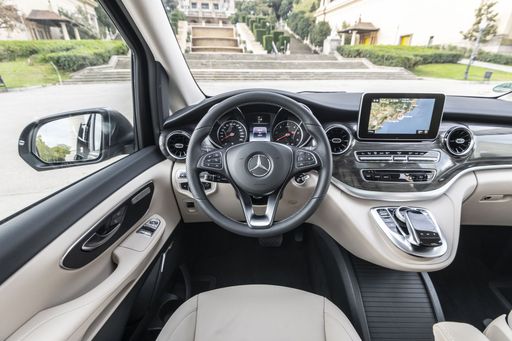 @ group-media.mercedes-benz.com
@ group-media.mercedes-benz.com
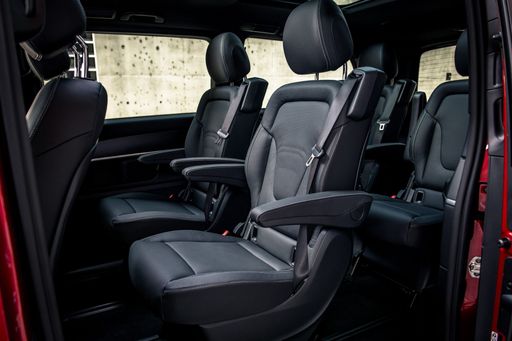 @ group-media.mercedes-benz.com
@ group-media.mercedes-benz.com
Toyota C-HR
The Toyota C-HR stands out with its distinctive and bold design that combines sleek, angular lines with a sporty posture. Its comfortable and stylish interior is equipped with advanced technology features, providing a seamless driving experience. The vehicle offers impressive handling and performance, making it a compelling choice for those who appreciate a blend of practicality and flair on the road.
details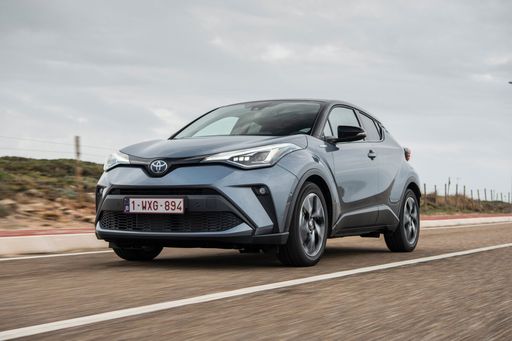 @ Toyota
@ Toyota
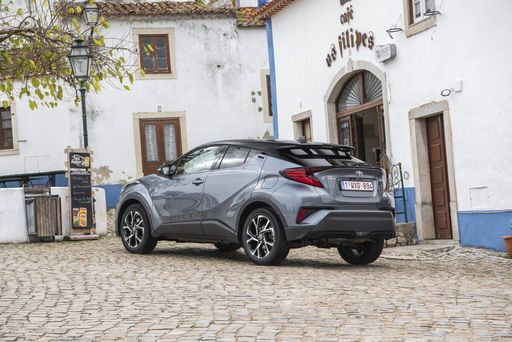 @ Toyota
@ Toyota
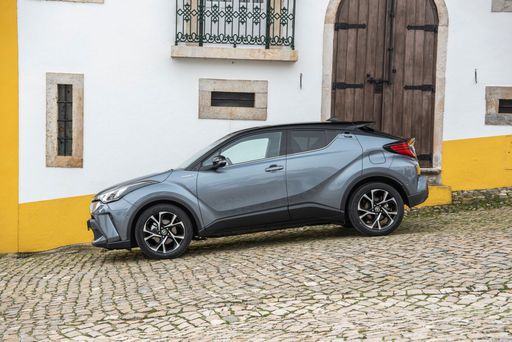 @ Toyota
@ Toyota
 @ Toyota
@ Toyota
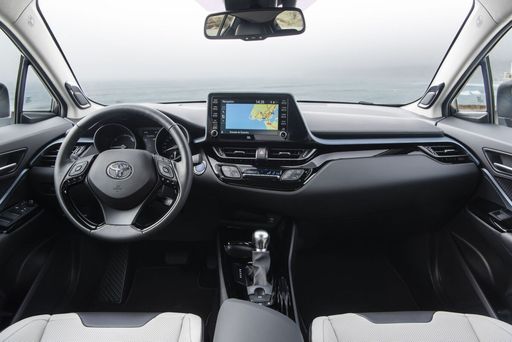 @ Toyota
@ Toyota

|

|
|
|
|
Costs and Consumption |
|
|---|---|
|
Price
44900 - 79500 £
|
Price
29100 - 42800 £
|
|
Consumption L/100km
7.1 - 10.2 L
|
Consumption L/100km
0.8 - 5.1 L
|
|
Consumption kWh/100km
-
|
Consumption kWh/100km
-
|
|
Electric Range
-
|
Electric Range
67 - 68 km
|
|
Battery Capacity
-
|
Battery Capacity
-
|
|
co2
185 - 232 g/km
|
co2
17 - 115 g/km
|
|
Fuel tank capacity
57 - 70 L
|
Fuel tank capacity
43 L
|
Dimensions and Body |
|
|---|---|
|
Body Type
Bus
|
Body Type
SUV
|
|
Seats
6
|
Seats
5
|
|
Doors
5
|
Doors
5
|
|
Curb weight
2192 - 2464 kg
|
Curb weight
1505 - 1755 kg
|
|
Trunk capacity
610 - 1410 L
|
Trunk capacity
350 - 447 L
|
|
Length
4895 - 5370 mm
|
Length
4362 mm
|
|
Width
1928 mm
|
Width
1832 mm
|
|
Height
1901 - 1908 mm
|
Height
1558 - 1564 mm
|
|
Payload
636 - 908 kg
|
Payload
375 - 425 kg
|
Engine and Performance |
|
|---|---|
|
Engine Type
Diesel, Petrol
|
Engine Type
Full Hybrid, Plugin Hybrid
|
|
Transmission
Automatic
|
Transmission
Automatic
|
|
Transmission Detail
Automatikgetriebe
|
Transmission Detail
CVT
|
|
Drive Type
Rear-Wheel Drive, All-Wheel Drive
|
Drive Type
Front-Wheel Drive, All-Wheel Drive
|
|
Power HP
163 - 237 HP
|
Power HP
140 - 223 HP
|
|
Acceleration 0-100km/h
7.4 - 10.7 s
|
Acceleration 0-100km/h
7.4 - 9.9 s
|
|
Max Speed
188 - 220 km/h
|
Max Speed
175 - 180 km/h
|
|
Torque
370 - 500 Nm
|
Torque
-
|
|
Number of Cylinders
4
|
Number of Cylinders
4
|
|
Power kW
120 - 174 kW
|
Power kW
103 - 164 kW
|
|
Engine capacity
1950 - 1999 cm3
|
Engine capacity
1798 - 1987 cm3
|
General |
|
|---|---|
|
Model Year
2024
|
Model Year
2024 - 2025
|
|
CO2 Efficiency Class
G
|
CO2 Efficiency Class
C, B
|
|
Brand
Mercedes-Benz
|
Brand
Toyota
|
Mercedes V Class
Introduction to the Mercedes-Benz V-Class
The Mercedes-Benz V-Class offers a unique blend of luxury, versatility, and cutting-edge technology, making it an appealing choice for families and businesses alike. With its spacious interior and a range of powerful engine options, the V-Class continues to set the standard in the MPV segment.
Impressive Design and Comfort
The exterior of the V-Class is characterised by its elegant lines and robust proportions, offering a commanding presence on the road. Inside, the emphasis is on luxury and comfort. With seating for up to six passengers, passengers can enjoy ample legroom and high-quality materials throughout the cabin.
Engine Options and Performance
The V-Class is available with a variety of engine configurations, including diesel and petrol options. The power output ranges from 163 PS to an impressive 237 PS, depending on the variant chosen. The diesel engines, known for their efficiency, offer an attractive balance between performance and fuel economy, with consumption figures ranging from 7.1 to 8 L/100km.
Innovative Technology and Features
Mercedes-Benz is renowned for integrating advanced technology in its vehicles, and the V-Class is no exception. It features the latest MBUX (Mercedes-Benz User Experience) infotainment system, which includes voice control, navigation, and smartphone connectivity. Safety is also a priority, with features such as Active Brake Assist, Attention Assist, and Crosswind Assist.
Driving Dynamics and Versatility
The V-Class offers both rear-wheel and all-wheel-drive configurations, ensuring it can tackle various driving conditions with ease. The 9G-TRONIC automatic transmission contributes to a smooth and dynamic driving experience, while the ample luggage space of up to 1410 litres ensures practicality for both personal and commercial use.
Conclusion: A Leader in Luxury MPVs
With its combination of luxurious comfort, powerful engines, and state-of-the-art technology, the Mercedes-Benz V-Class stands out as a leader in the luxury MPV market. Whether you're looking for a family vehicle or need a reliable business transport solution, the V-Class offers the versatility and sophistication required for modern life.
Toyota C-HR
Revolutionising the Crossover Segment: The Toyota C-HR
The Toyota C-HR has firmly established itself as a standout contender in the compact crossover segment. Known for its distinct design and hybrid capabilities, the C-HR continues to prioritise innovation and efficiency. In this article, we delve into the technical details that make the 2024 iteration a compelling choice for discerning buyers.
Distinctive Design and Aerodynamics
The Toyota C-HR boasts a striking design that combines angular lines with modern aesthetics. This isn't merely for show; the design enhances aerodynamics, improving fuel efficiency and handling. With dimensions of 4362mm in length and a sophisticated structure, the C-HR strikes a balance between urban agility and on-road stability.
Impressive Hybrid Powertrains
The C-HR lineup offers innovative hybrid and plug-in hybrid drivetrain options. The full hybrid system is tailored for those who seek both economic and environmental benefits. It combines a petrol engine with an electric motor to deliver power outputs ranging from 140 to 223 PS, achieving remarkable fuel consumption rates from 0.8 to 5.1 L/100km. The 2.0 Plug-In Hybrid variant impresses with an electric range of 67 km, ideal for urban commuters.
Unmatched Efficiency and Performance
Acceleration figures for the C-HR range from 7.4 to 9.9 seconds to reach 0-100 km/h, ensuring a responsive driving experience. Maximum speeds between 175 and 180 km/h cater to those who appreciate a bit of zest on the open road. Coupled with CVT automatic transmission and both front-wheel and all-wheel-drive configurations, the C-HR adapts to various driving conditions with ease.
Advanced Technology and Features
Inside, the C-HR is equipped with the latest technology aimed at providing connectivity and comfort. The model hosts an array of features across its diverse trim levels, including Business Edition, Lounge, and the sporty GR SPORT. Each variant is designed to meet the demands of different lifestyles, ensuring there's a C-HR model to suit every taste.
Sustainability and Cost Efficiency
With CO2 emissions ranging from 19 to 115 g/km, the C-HR stands as a testament to Toyota's commitment to sustainability. Financially savvy consumers will also appreciate the running cost, with monthly expenses from €959 to €1204, and a cost per km as low as 38.4 cents. Such efficiency makes the vehicle an attractive option for eco-minded buyers.
Conclusion: A Forward-Thinking Choice
The 2024 Toyota C-HR embodies Toyota's forward-thinking approach to automotive innovation, blending eco-friendly hybrid technologies with stylish design and practicality. It offers a glimpse into the future of driving, where efficiency meets elegance. Whether you're a city dweller or an adventure seeker, the C-HR promises a driving experience that is both enjoyable and environmentally conscious.
The prices and data displayed are estimates based on German list prices and may vary by country. This information is not legally binding.
